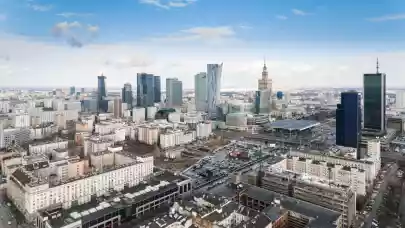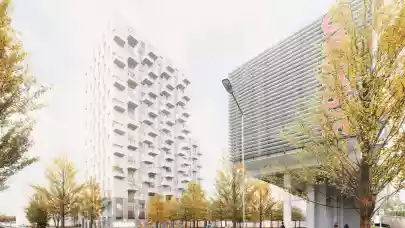
Throughout the first quarter of 2020, the total transaction volume on the commercial real estate market in Poland exceeded €2.4 billion, according to preliminary results by Avison Young. This volume is almost three times as high as compared to the corresponding period of 2019, however, in line with Avison Young forecasts from December last year. Robust investment activity has been mainly noted in the industrial and office sectors. Asian investors dominated investment volume in terms of capital origin, with a particular focus on the industrial sector. At the same time, a growing investment activity of CEE investors is continuously observed, especially on the office market.
Warehouses booming
More than 60% of the total transaction volume (€1.4 billion) was generated on the industrial market, which confirms strong investors’ interest in this sector. As a result, only after the first three months of the year, the industrial sector has already achieved 95% of the last year’s total transaction volume of the sector. A significant part of this is a result of large, pan‑European takeover of Goodman by GLP. This confirms another trend spotted recently on the property market, namely increased interest in corporate‑level acquisitions, offering investors not only property investment, but also the takeover of whole operations what makes leasing and asset management easier, but also enables rapid expansion to the market.
Office sector - no surprises
In the office segment, the first quarter was dominated by Warsaw, where as much as €520 million was transacted, accounting for 70% of the total volume in this sector. Transactions closed confirmed current market trends:
- High attractiveness of Wola district, with 3 transactions closed – Wola Center, Prosta Office Center and Green Corner.
- Majority of the properties transacted were at least 8-10 years old. This confirms strong interest for older assets, which are usually well located, still offer good quality office space and at the same time can be acquired at a much more attractive price than brand new buildings.
- Growing interest in Mokotow, which has seen barely any transactions a few years ago. It has changed in 2019 with four transactions totalling ca. €105 million and the interest in this area continues.
- Continued interest of CEE Investors in the Polish market, such as Czech CPI Property Group or Hungarian Adventum.
Retail: convenience, convenience, convenience...
The retail sector has seen a relatively small volume of the investment transactions closed during the first three months of the year, which accounted for only 6% of the total transaction volume. It is, however, worth taking a closer look at the properties that were transacted. Out of 5 deals, there were 2 retail parks and a portfolio of 2 standalone DIYs transactions. This is another proof that there is still investors’ demand for the retail sector. However, it is now focused on convenience, well-anchored, asset management light properties.
What’s next?
There is no doubt that the current macroeconomic situation will have a significant impact on the commercial property market. But are all the changes that are about to come really unexpected? Or were they in fact foreseen for a long time and now came to the market just much more rapidly than anticipated? Who will come away unscathed from the current turmoil and who will need to face up serious challenges in the coming months?
The lockdown caused by COVID-19 might result in opportunities for:
- Industrial sector – stronger interest due to growing e-commerce, but also as a result of supply chains deglobalization.
- Core assets with long WAULTS.
- Flexible sellers, willing to offer vendor’s financing.
- Markets perceived as safe havens.
- Flexible, hands-on asset managers, with good relations with occupiers, excellent knowledge of their situation and needs.
The lockdown caused by COVID-19 might result in challenges for:
- Retail, obviously, but on the other hand the recent situation has shown that our society is still significantly accustomed to brick and mortar, especially when it comes to everyday, convenience shopping habits and that changes in the industry are imminent, the recent situation only accelerated them. The only way for the industry to survive is that all stakeholders (owners, tenants, banks) must work on possible transitions and problems together-
- Newcomers as both vendors and financing institutions are now focusing on transactions with reliable, known partners.
- Developers due to the probable delays in construction due to obstructions in deliveries, but also increased tenants’ aversion to changes and relocations.



